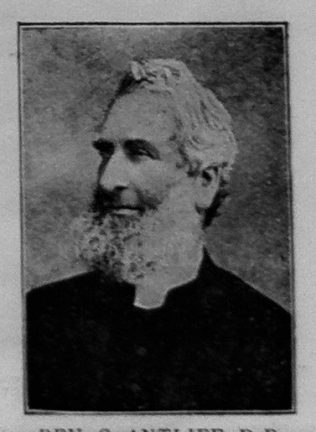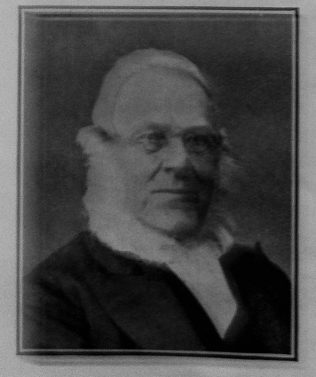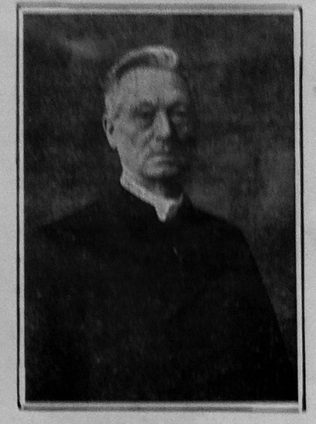Derby and the growth of Primitive Methodism.
Description by Rev C.F.Gill in the Handbook of the 94th Annual Primitive Methodist Conference held n Derby in 1913



Derby at the end of the seventeenth century was a small country town with a population of 4,000, dependent upon its markets, fairs and the gentry of the neighbourhood. Today it is an important centre for trade and commerce with a population of 123,433. For the complete story of its rise and progress we must study the history of long centuries , but the chief developments have taken place during the last 200 years. With the introduction of the hosiery and silk trades and the establishment of the manufacture of porcelain in the early years of the eighteenth century we have the commencement of a period of industrial activity which created a new era in the history of the town. In 1793, the canals linked up the town with the adjacent district, and the wealth of coal and iron made possible still greater progress. In 1839, railway communication was established between Nottingham and London and in the following year a line was completed to Leeds. Undoubtedly the chief cause of the growth of the town is to be found in the remarkable extension of the railway system and the establishment by the Midland Railway Company of works for the construction of their rolling stock and locomotives. Many other industries have grown up to meet the needs of a rapidly increasing population and the town now enjoys a considerable measure of prosperity
With its commercial growth many changes have taken place and one is unable to form any true idea of the old Derby from the town as we see it today. Narrow streets and lanes, for the most part unpaved and dangerous to pedestrians, have given place to broad and pleasant thoroughfares with their service of electric trams. The domestic dwellings of past days which were often but one room, situated amid insanitary conditions, have disappeared and houses have been erected which make possible a purer and happier life. Efforts have been made to improve the lives of the people. Educational advantage of a special character have been placed within the reach of all by Secondary and Technical Schools. Free Library and the Art Gallery. The health enjoyment of the people have been catered for in the opening of recreational grounds. In 1840 the Arboretum was presented to the town By Mr Joseph Strutt, who, in his speech on that occasion, said, ”As the sun has shone brightly on me through life, it would ne ungrateful in me not to employ a portion of the fortune I possess in promoting the welfare of the amongst whom I live and by whose industry I have been aided in its acquisition.” The exercise of that spirit on the part of employers of labour generally would go far to meet the many difficulties which arise from time to time in the labour world. We rejoice that others of the same mind have been found among the citizens of this town, and that today there are those whose chief aim is to secure greater facilities for the betterment of life.
The story of the commercial prosperity of Derby cannot be dissociated from the religious life, which through centuries has exacted its influence on the inhabitants. To say that Derby abounds in churches and chapels is but another way of saying that her life has been influenced by Christian truth. In the Episcopalian churches of the town are to be found many who take an active interest in the moral and spiritual welfare of the people. Nonconformity has laboured under many disabilities. The Presbyterians were undoubtedly the first Protestant Dissenters in the town, having obtained a licence in the reign of Charles the Second to celebrate Divine Service in the old chapel situate across St Mary’s Bridge. The Congregationalists commenced their work in 1778 by holding service in the Market Place and in 1789 a Baptist Minister – the Rev Dan Taylor- preached his first sermon in Willow Row. The Society of Friends obtained at Derby the name by which they are now generally known. George Fox, who was imprisoned for twelve months in the town, says, “Justice Bennett of Derby was the first that called us Quakers because I bid him tremble at the word of the Lord.” In 1762John Wesley preached at a house in Derby and succeeded in forming a Society, the first preaching place being the Old Malt House in St Michael’s Lane. In 1805 the first chapel was built in King Street. The notice of the first Anniversary stated that “the two front rows in the gallery will be reserved for the ladies.”
We are in possession of a brief account of the introduction of Primitive Methodism into Derby, written by an old man named Thomas Roe who for many years was associated with the pioneers of our work in the district. This brief account, handed some years ago ro one of our Officials, Mr James Potter Junr’., reads as follows:-
“Primitive Methodism was first introduced into Derby in 1811. Fearing a French invasion under Napoleon Bonaparte, the Government of the day established military depots in all the large towns of the Kingdom. Two soldiers, John Locker and David Watson, were sent to guard the Derby depot built in Albion Street. Both were earnest Primitive Methodists and early in 1811John Locker preached the first Primitive Methodist sermon in Derby, standing on an old chair just outside the depot. He announced his text, “Ye must be born again.” Five or six boys formed his congregation. One, Mr Rob. Webster, is still living in Derby in honoured old age. The good work went on graciously. Crowds gathered, converts were multiplied and a church was formed in 1812. John Locker, David Watson and a little band of church members byuilt a small chapel in Court No2, Albion Street. Subsequently a larger chapel was built fronting the main thoroughfare. For some years the Derby Society was included in the Belper Circuit.”
This account differs somewhat from that given in Kendall’s history, but it has facts associated with it seem to suggest its reliability. Clowes visited Derby in the early days of our work, probably in 1817, and Kendall tells us he makes kindly mention of a soldier in the Royal Artillery who took him to his quarters in the Armoury and Kendall adds,
“We regret the name of Clowes soldier friend has not been preserved, for he rendered good service to the Derby cause, not only by giving the missionaries bed and board, but by helping in the converting work and in the getting up of the chapel in Albion Street.”
Is it not possible that we have in this account the missing names of the men who assisted the pioneers of our Church? The work at first was difficult and the history chequered, but in the story of these early years we have the record of great devotion and useful service, as slowly yet surely the foundation of our church was laid. It is with the year 1836 that our history assumes a period of progress and achievement which have (sic) made possible our position today. On the 18th March 1836, Derby received the sanction of the General Committee to again become a Circuit. As we look back across the years that have intervened, we are able to measure the importance attaching to the first minute of the Circuit Committee held on 15th July 1836, ”That Brother W. Antliff’s credentials be received.” A ministry of two years followed with an aggressive policy and preaching places were established in town and country. A few years later Thomas Morgan travelled to Derby, a name which lingered we are told for long years as oil poured forth in the lives of the people who laboured with him, Difficulties, defeats, decreases, yet undaunted , surely they might have said:
We fall to rise, Are baffled to grow stronger.
At the September quarter day of 1842, a decrease of 72 members was reported. We can well imagine the fearless searching for reasons and then the following resolution was passed:-
“That we call out a second preacher and that he be of the right sort, and that we mission and remission town and country.”
The first chapel in Albion Street was followed by one in Babington Lane, opened in 1841, but in 1842 it was resolved:
“That we give up Babington Lane, sell Albion Street chapel, or turn it into houses as may be best, and erect a new chapel.”
In the autumn of the same year, a piece of land was purchased in Traffic Street, the first deed bearing the date 26th November 1842. The earnestness which characterised the officials of that day is set forth in the resolution of a Circuit Committee held at that time: –
“That measures be adopted to set the whole society in motion in begging.”
We gather something of the style and character of this chapel when we find in a document headed “important” and signed and witnessed by Thomas Morgan and William Bullock that one John Hackett “gave all the forms long and short formerly in the Babington Lane chapel for the new chapel in Traffic Street.” A resolution which was passed reads –
“That Brother Morgan be empowered to purchase what he can towards the new chapel , windows, seats, etc., anywhere and everywhere.”
In August 1865 the foundation stones were laid of the present chapel in Traffic Street during the superintendency of the Rev. S Antliff, D.D., at a cost of £4,953.
As we think of the humble position in life occupied by the members at the time, the erection of such a church was no small undertaking. Difficulties at the time evidently necessitated the schools being under the church. With the lapse of years and changed conditions, this has somewhat impeded the work among the young. The Spartan mother bade her son, when he found his sword too short, add a step, and the workers at Traffic Street have for many years by their devotion and sacrifice given the added step which had enabled them to continue a splendid work among the young people of the neighbourhood.
The second circuit was formed in 1871, with Kedleston Street, the Conference Chapel, as the Head. The work in this neighbourhood commenced we think with preaching in a house in Brook Walk but the Society afterwards removed to Gisbourne Street. During the ministry of the Rev John Hirst and his colleague the Rev S Bottomley, the first chapel was erected in Kedleston Street in the year 1848. The Society during this period witnessed a great revival. How formal the resolution reads,
“that Kedleston Street have a protracted meeting to continue fifteen days and to finish with a great day”
Then the wonderful and gracious work begins and the news spread far and wide and the people walk in from the villages and adjacent towns to share in the services. William Hickingbottom, a Diamond in the Rough, as the Rev John Barfoot termed him, walked in we are told from Belper.
The Church in which the Conference will be held was built in 1871, during the ministry of Rev I J Hardy, at a cost of £6,474. The school premises were built in 1899, during the superintendency of Rev T Richards, at a cost of £2,200. They are regarded as a very fine suite of premises, providing accommodation for 1,000 children. The years which have followed the opening of the school, like the former years in the history of the church, have been full of historic effort, and no less a sum than £3,048 has been raised for debt reduction and improvements during that period.
The third circuit was formed in the year 1881. Meetings were held for a time in the Athenaeum Rooms and in 1879 the Central Church was built at a cost of £6,300. For many years this church suffered through a heavy debt, but with help received from the Connexion the sister circuits of the town, and the loyalty and devotion of the men and women associated therewith, the position has been more and more assured, During the past three years, under the superintendency of the Rev T McKenzie, aided by the splendid challenge gift of one of its most devoted members, this church has been able to still further reduce its debt by the sum of £500.
The fourth circuit was made from the first circuit in 1903, with Dale Road church as its head. The school which served first as a chapel was erected in 1880 and in 1901, during the ministry of Rev. J T Gooderidge and Rev. T.A. Wagstaffe, the present church was built, the cost of the chapel and school being £3,120. We have a number of smaller chapels in the town associated with the various circuits, namely Mount Street, Mansfield Street, Campion Street, Dean Street, St Thomas Road and Graham Street. In the villages two chapels call for special reference. At Draycott, in the first circuit, a Memorial Church has been built in memory of Rev S Antliff D.D. and at Littleover in the third circuit to the Rev John Wenn, men who rendered in their prime of life untold service to Derby Primitive Methodism and who in their eventide in the villages named showed to the last an undiminished interest in our Zion.
The history of Primitive Methodism in Derby is associated with the names of a long line of ministers and laymen who have given devoted service for the building up of our Church. Many of them have passed from us to their reward. Among that number we must mention the name of Robert Robinson who travelled twice in Derby during his active ministry and who, when he retired in the year 1878 came to spend his last days in the town. For 21 years the churches and Kedleston Street in particular received the benefit of his labour and his saintly character and earnest zeal have left an abiding influence.
Ot those who remain with us, Richard Smith, who was for several years superintendent and who is now supernumerary of the Derby first circuit, merits a word. He is spending, as far as advancing years will allow, a busy eventide in the Master’s vineyard. IN the arrangements for the Conference he has shown great interest and as Chairman of the Hospitality Committee has laboured with zeal to secure hospitality for the delegates.
We have in the four circuits a membership of 1,097 and 2,916 scholars in our Schools.
With many other towns we believe Derby has made too many circuit divisions. Greater success might have been possible by the closed union of our forces, but the arrangements for the Conference have shown that the division is only in circuit organisation and administration. The best men and women of each circuit have worked side by side rendering useful service. Throughout our church intense interest has been manifested and many prayers have been offered that the spirit of God may be poured upon all the Churches and that the Conference may be a time of great spiritual blessing. As the Conference assembles let us remember one of God’s ancient promises, the fulfilment of which is assured, as we possess the true attitude which it suggests:-
“Thus saith the Lord God, I will yet for this be inquired of by the House od Israel, to do it for them; I will increase them with men like a flock, as the holy flock, as the flock of Jerusalem in her solemn feasts. So shall the waste cities be filled with flocks of men, and thy shall know that I am Lord.” Ezekiel 36ch., 37-38verses.
Remember Lord the ancient days,
Renew Thy work, Thy grace restore;
And while to Thee our hearts we raise,
On us Thy holy spirit pour.





Comments about this page
Derbyshire Record Office:
Ref. D161/BOX/410/103. A Box of the Derbyshire Primitive Methodist Connexion: Forms of Title Deeds and Settlements for Derbyshire Primitive Methodist Chapels, Land, School Houses and other Premises. Note: of interest to historians, solicitors, etc.
Add a comment about this page